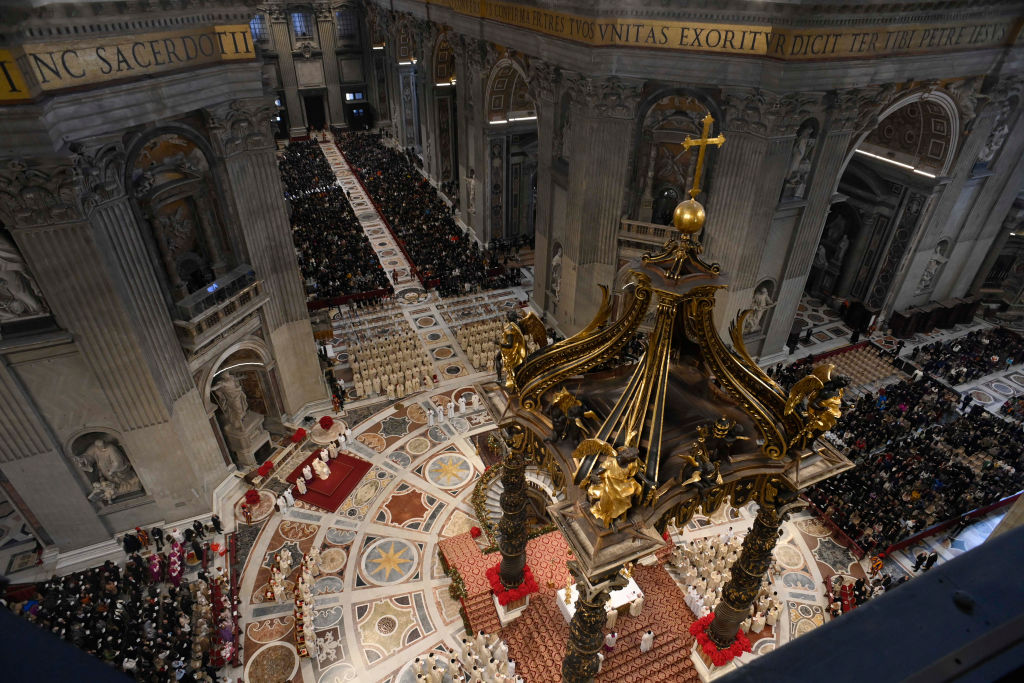Historical manuscripts and closely-guarded treasures of the VATICAN APOSTOLIC LIBRARY are now accessible through digitization and blockchain, ensuring their preservation.
There has always been a lot of mystery surrounding the Vatican Secret Archives. Secured in a two-story underground vault beneath the Cortile della Pigna, this incredible collection of documents, renamed the Vatican Apostolic Archive, spans 12 centuries. From ancient manuscripts to letters between popes and kings, records from the Roman Inquisition, and a list of banned books (known as the Index Librorum Prohibitorum), it’s an archive filled with secrets that only a select few are privileged to access. And although there have been many books, films and theories about what lies within its vaults, the true extent of its mysteries remains locked away.
The same could once be said about the Vatican Apostolic Library. Founded in 1475, the library houses one of the world’s richest collections of manuscripts, printed books, coins and medals. It was only accessible to high-ranking clergy and elite scholars, its content closely guarded until the 19th century.
All of these fragile documents required preservation and specialized, climate-controlled rooms were introduced. It’s only within the past decade that the Vatican Apostolic Library has focused on digitizing its vast collection, making 27,500 manuscripts in it accessible worldwide on platforms like DigiVatLib.
Headquartered in Tokyo, Japan, NTT Data created a digital archiving solution called AMLAD (Advanced Museum Library Archives Deposit). AMLAD wasn’t created for the Vatican Apostolic Library but this mammoth collection, often referred to as historical heritage of humankind, made it the perfect project to showcase the platform’s capabilities. Even when well-preserved, ancient documents are at risk of deterioration, digitization provides a way to maintain and preserve these collections, which is why NTT DATA developed a tool for archiving both 2D and 3D data.
Loading...
“It’s one of the challenges that cultural institutions hold right now,” explains Kyohei Jinno, Deputy Manager of NTT Data Japan Corporation. NTT Data has been working with the Vatican Apostolic Library for a decade. Their cloud-based digital storage system now includes over 27,500 manuscripts which are available online to users worldwide, complete and free of charge with high-definition images.
The next step for the Vatican Apostolic Library and NTT Data is Web3 – NFT technologies.
“We believe the concept of Web3 with its characteristics like decentralization, permissionless, native payments may enable a new community,” says Jinno. “The reliability of digital data becomes a challenge during digital data archiving and this can be mitigated by ensuring traceability through the recording and referencing of the digital data’s provenance information and immutability information.”
In other words, blockchain technology.
NTT have already used this technology to successfully build a digital archive system for the ASEAN Cultural Heritage Digital Archive (ACHDA) project. “Web3, as an open information system platform, isn’t tied to specific service providers, allowing everyone to participate. In this proof of concept, we issue NFTs as proof of contribution and use them as authentication keys,” adds Jinno. This novel approach gives users access to high- resolution images and detailed information about selected cultural heritage items. “Instead of providing original artwork, we are exploring options such as special experiences or abstracted content,” says Jinno.
The idea is that by using NFTs, they will not only encourage greater engagement with the library’s collections, they’ll be able to demonstrate blockchain’s potential for preserving and sharing heritage.
Jinno explains that a Web3-based digital archiving approach provides a way to safeguard these cultural assets by creating reliable digital versions that can be restored if the original materials are damaged or destroyed.
“The main purpose of preservation is to restore data,” he adds. “But at the same time, we’re showing people through a project like the Vatican Library how the blockchain works and how it can be used to protect original content.”
Loading...
